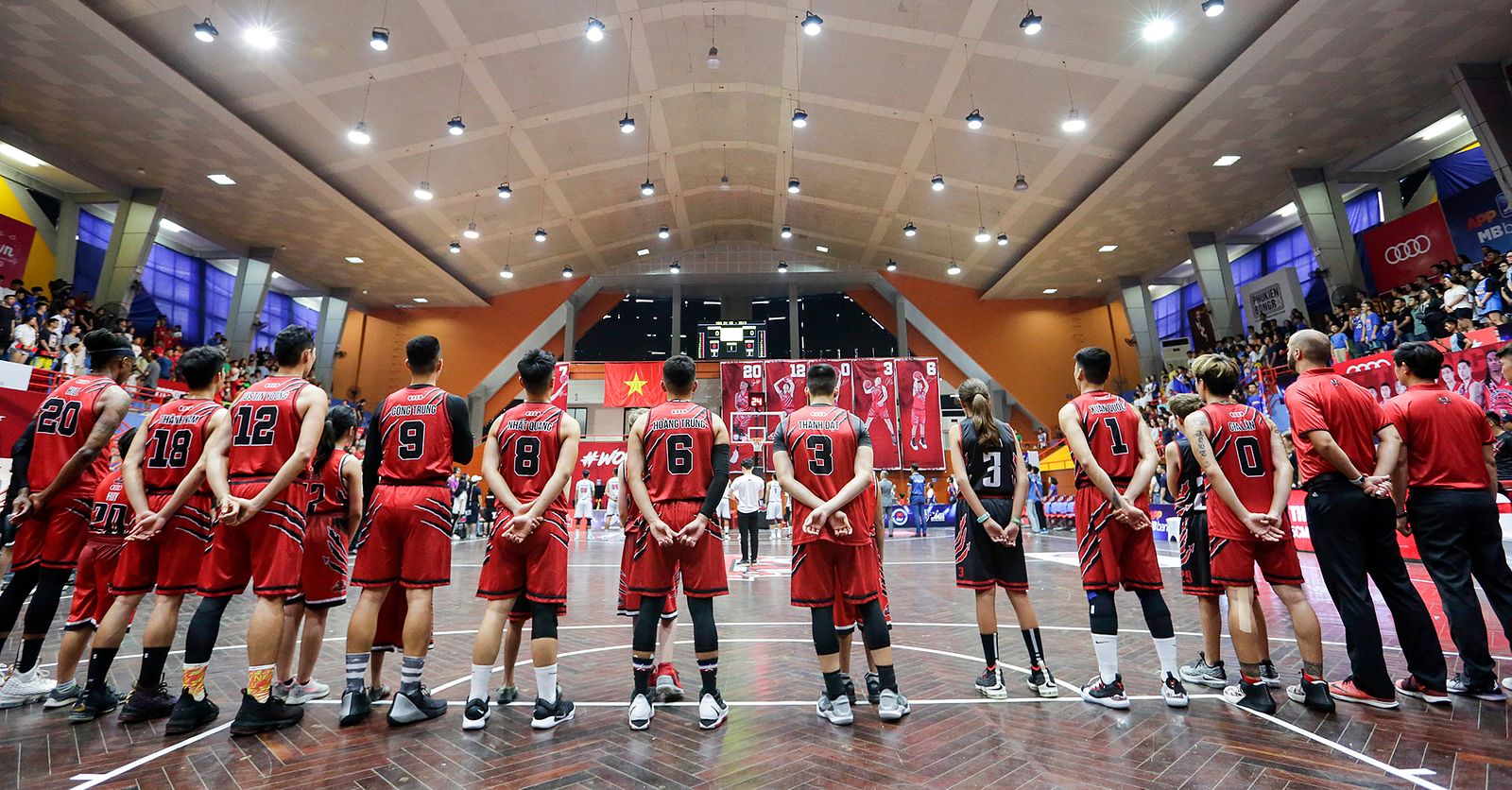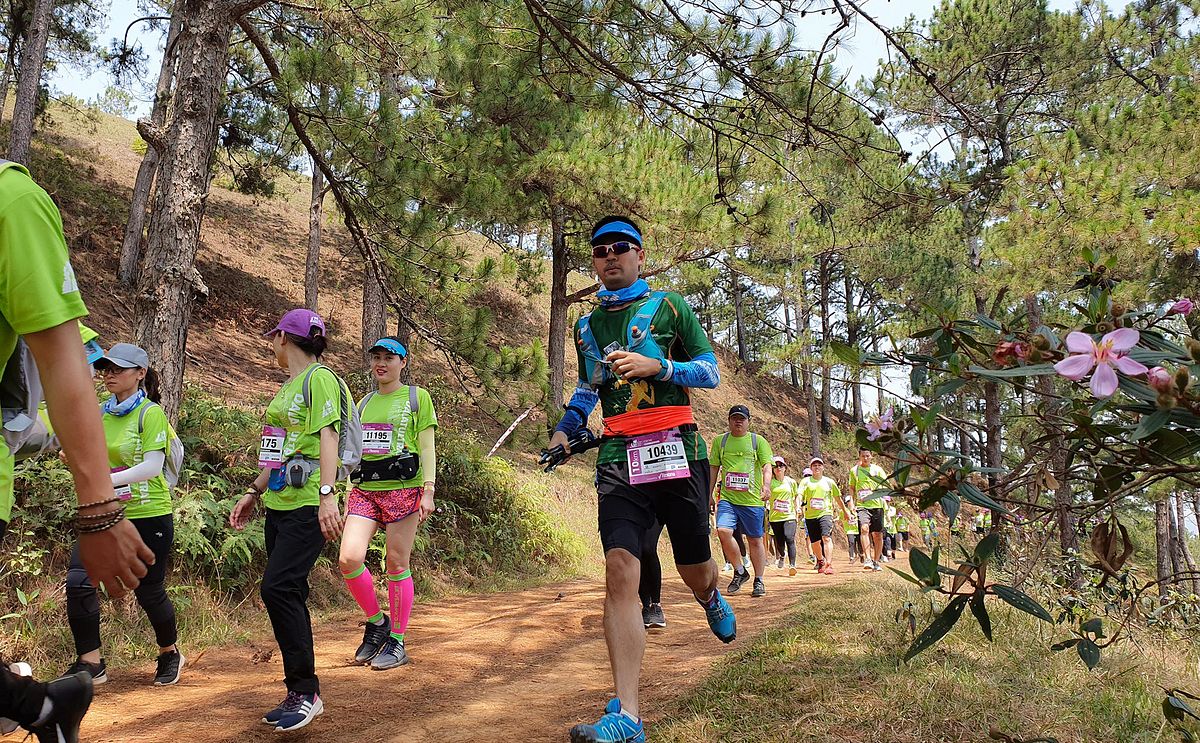I arrived with eager anticipation on Sunday, December 29 at the Tao Dan Sports Center for the start of the club matches.
A table displayed the trophies and prize belts awaiting the participants, along with luminaries from the martial arts world, including Le Dinh Chuong, the noted Vietnamese kick-boxing champion, who served as chief judge.
As each fighter entered the ring, he or she bowed in four directions with hands pressed together. This is an abbreviated form of the ritualistic Wai Kru, or Ram Muay, performed by pro fighters. In its full version, the fighter enters the ring and goes counter-clockwise to each corner and offers a short prayer, showing respect and gratitude to their teacher/master, parents and ancestors. They then go to the center and performs a personal ritual movement, usually to music.

The championship 60kg belt and trophies at Fight Night.
A small crowd of about 50 people had by now gathered to see the afternoon preliminary Atom (female) and Bantam (male) weight class matches. The fighters were from Nguyen Tran Duy Nhat’s two gyms, as well another club in Saigon.
From the initial bell at the start of the one-minute rounds, the action was fast and furious. The lightweight fighters exhibited boundless energy, rapidly attacking each other with flailing punches and then falling into clinches. What they lacked in disciplined technique and finesse was more than made up for in non-stop action.

Pinned in the corner during a bantam-weight match.
By the end of the third round, the two combatants were doing more clinching than fighting. But they had given their all, which was acknowledged by the applause and shouts from the audience. No matter the level, the matches are run professionally, with trained judges, coaches and a doctor looking out for the welfare of the fighters.

Coaching and care between rounds.

Dazed and groggy, a fighter receives a standing eight-count.
As the day progressed into evening, the crowd grew to overflowing, with more than 200 spectators, and so did the noise level. A few of the guys I had been following during the past two months had bouts, and I found myself rooting for them from my ringside perch. I had witnessed their determined training under Nhat and his staff for the past eight weeks.

A solid forearm to the face during Fight Night.

Edward forcing his opponent into a corner during Fight Night.

Minh Ngoc An with Truong holding his trophy, certificate and award money.
The matches provided plenty in terms of both excitement and photo ops. Afforded a space behind one of the ring corners, I was up-close and personal to the punches, clinches and flying sweat that at times came in my direction. That position was especially advantageous between rounds, as fighters were being exhorted by trainers and coaches on how to improve their defense or better attack their opponent’s weaknesses.

Even the ref reacted to this blow that sent a fighter reeling.

Ybon Dang, the eventual overall champion, jumping into a defensive position.
One thing that was evident was the respect shown by and between fighters. Even when a knockout is scored, the victor shows his concern for his fallen opponent. After the result of each match is announced and the referee raises the winner’s arm, the two combatants bow to each other.
With the matches ended and the last awards given out, I can say that I’ve gained a better understanding of Muay Thai, and admiration for those who train in it. While I will not be stepping into the ring on a competitive basis, I can see how the practice offers more than just physical prowess. It enhances one’s personal journey of self-improvement, encompassing body, mind and spirit.

Multiple pairs training in the ring. Reminiscent of the grainy film newspaper boxing photos I grew up with.

Dripping with sweat, Truong takes a well-deserved break during a training session.

Phuc's perfectly placed front leg kick sends both fighter and sweat flying.














